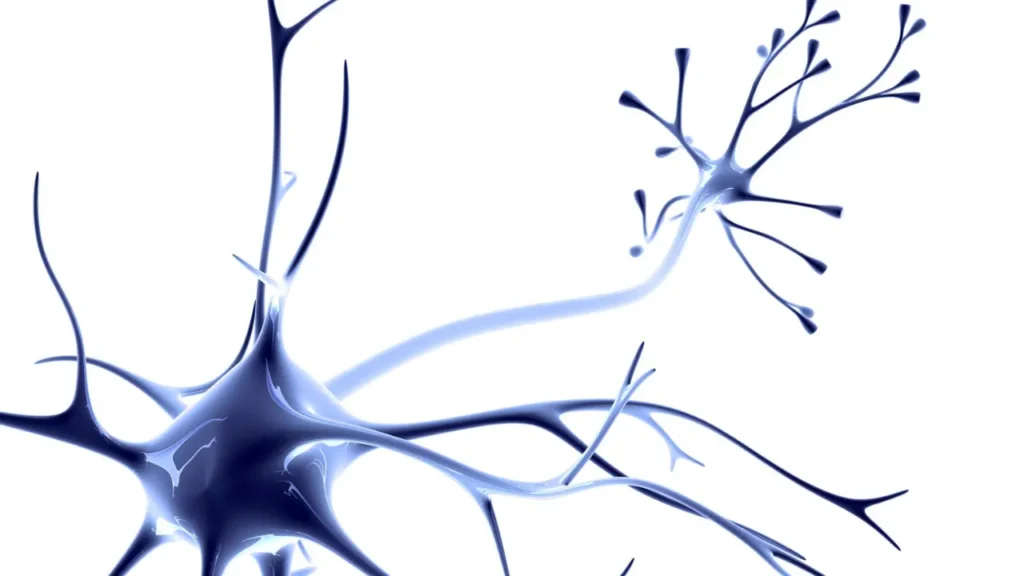Allium ursinum, commonly referred to as bear’s garlic, wild garlic, ramsons, or buckrams, is a perennial herb that is indigenous to Europe and Asia. It belongs to the Allium genus, which also contains chives, garlic, onions, and leeks. It has been long utilized in traditional medicine for its many health advantages. Nowadays, bear’s garlic is gaining popularity as a nutritional supplement. The chemistry, health advantages, ideal dosage, adverse effects, potential drug interactions, and appropriate applications of this powerful supplement are all covered in this article.
You May Also Like:
Chaga: Benefits, Dosage, Side Effects, Drug Interactions, and Other Important Information
Butcher’s Broom: Benefits, Dosage, Side Effects, Drug Interactions, and Other Important Information
Bear’s Garlic: Benefits, Dosage, Side Effects, Drug Interactions, and Other Important Information is an original (NootropicsPlanet) article.
The Nature of Bear’s Garlic
This perennial herbaceous plant known as bear’s garlic (Allium ursinum), is often referred to as wild garlic, ramsons, or buckrams and belongs to the Allium genus, which also includes other plants like onions, garlic, leeks, and chives. It thrives in moist wooded environments and is indigenous to Europe and portions of Asia.
Bear’s Garlic can reach a height of 50 cm and has long, flat, bright green leaves that resemble lily-of-the-valley. The plant blooms in the spring with tiny, white, star-shaped flowers, which are followed by bulbils that develop inside the flower head. These edible bulbils carry garlic flavor.
Bear’s Garlic is a common herb used in cooking as a flavoring because of its pungent, garlic-like aroma. In traditional medicine, mainly in Europe and Asia, it is also employed for its therapeutic qualities. The plant is renowned for having a high concentration of bioactive substances, including phenolic acids, flavonoids, and organosulfur compounds, which support its range of health advantages.
Health Benefits of Bear’s Garlic
- Cardiovascular Health: By lowering blood pressure, enhancing blood lipid profiles, and avoiding platelet aggregation, Bear’s Garlic has been found to have beneficial impacts on cardiovascular health. The vasodilatory characteristics of the organosulfur compounds, especially allicin, can help reduce blood pressure. Additionally, these substances have the ability to modify lipid metabolism, lowering levels of total cholesterol, LDL cholesterol, and triglycerides while raising levels of HDL cholesterol.
- Anti-inflammatory and Antioxidant Properties: Bear’s Garlic has anti-inflammatory and antioxidant properties that can help combat free radicals and shield cells from oxidative stress. Bear’s garlic contains flavonoids and phenolic acids, both of which have been shown to have potent anti-inflammatory and antioxidant properties. By preventing the synthesis of pro-inflammatory cytokines and other mediators, these substances can aid in the reduction of inflammation.
- Antibacterial Activity: Bear’s Garlic has been discovered to have antibacterial characteristics. Allicin has broad-spectrum antibacterial, antifungal, and antiviral action. It has been proven to work well against bacterial strains that are resistant to antibiotics, including methicillin-resistant Staphylococcus aureus (MRSA).
- Neuroprotective Effects: According to some studies, Bear’s Garlic’s anti-inflammatory and antioxidant characteristics may contribute to its neuroprotective effects. These outcomes may aid in preventing or delaying the onset of neurodegenerative illnesses like Parkinson’s and Alzheimer’s.

Chemistry of Bear’s Garlic
A variety of bioactive substances found in bear’s garlic contributes to its therapeutic benefits to the body. Organosulfur compounds, like allicin, which give bear’s garlic its very strong smell, are the main active ingredients of bear’s garlic. Alliin, -glutamyl-S-allylcysteine, and S-allylmercaptocysteine are among the others. Bear’s Garlic also includes a number of flavonoids, including quercetin and kaempferol, as well as phenolic acids, including ferulic acid and p-coumaric acid, in addition to these organosulfur compounds. These components’ anti-inflammatory, antibacterial, and antioxidant qualities help explain why this plant is good for your health.
Physiological Mechanisms of Action of Bear’s Garlic
The bioactive ingredients in bear’s garlic play different roles via a variety of physiological pathways.
- Cardiovascular Health: Bear’s Garlic contains allicin, which reduces blood pressure by relaxing blood vessel walls. Additionally, these substances have the ability to modify lipid metabolism, lowering levels of total cholesterol, LDL cholesterol, and triglycerides while raising levels of HDL cholesterol. This can lessen the chance of atherosclerosis, a condition where artery plaque accumulates and causes cardiovascular disease.
- Anti-inflammatory and Antioxidant Properties: Bear’s Garlic has anti-inflammatory and antioxidant properties that can help combat free radicals and shield cells from oxidative stress. Bear’s garlic contains flavonoids and phenolic acids with potent anti-inflammatory and antioxidant properties. By preventing the synthesis of pro-inflammatory cytokines and other mediators, these substances can aid in the reduction of inflammation.
- Antimicrobial Activity: Allicin also has broad-spectrum antibacterial, antifungal, and antiviral activity. It accomplishes this by causing damage to these pathogens’ cell walls, which results in cell death. This can aid in the prevention and treatment of infections, especially those brought on by bacteria strains that are resistant to antibiotics.
- Neuroprotective Effects: Because of its anti-inflammatory and antioxidant qualities, Bear’s Garlic has been demonstrated to have possible neuroprotective effects. By lowering oxidative stress and inflammation in the brain, these benefits may help prevent or halt the progression of neurodegenerative illnesses including Alzheimer’s and Parkinson’s disease.
- Support for the Immune System: Bear’s Garlic has been demonstrated to boost the immune system by boosting immune cell synthesis and function. This can aid the body’s defense mechanisms against illnesses and infections.
Overall, Bear’s Garlic’s physiological mechanisms of action are varied and support its range of health advantages. These pathways include immune system support, anti-inflammatory and antioxidant effects, antibacterial action, cardiovascular support, and neuroprotection.


Optimal Dosage of Bear’s Garlic
Bear’s Garlic dose recommendations can change depending on a person’s age, state of health, and particular health objectives. A healthcare practitioner must be consulted before beginning any supplements. However, the following are some basic recommendations for supplementing with Bear’s Garlic:
- Bear’s Garlic extract is standardized to contain 1-3% allicin per day, split into 2-3 dosages, for cardiovascular health.
- Bear’s garlic extract at doses of 300 to 900 mg taken twice a day can enhance the body’s natural antioxidant and anti-inflammatory mechanisms.
Side Effects of Bear’s Garlic
When included in a balanced diet and used in moderation, bear’s garlic is generally regarded as safe. However, some people may develop negative effects, especially if they use it as a supplement or a greater amount is taken. Typical negative effects include:
- Digestive discomfort: When taking Bear’s Garlic supplements, especially at larger doses, some people may feel stomach distress, bloating, gas, or diarrhea.
- Allergic reactions: Although uncommon, some people can have allergic reactions to bear’s garlic, especially if they have a history of allergies to other Allium species.
- Poor breath and body odor: Similar to other Allium species, Bear’s Garlic contains sulfur compounds that, when ingested in large doses, can lead to poor breath and body odor.


Potential Substance Interactions with Bear’s Garlic
Bear’s Garlic may interact with some medicines and dietary supplements, changing their effectiveness or raising the possibility of negative side effects. Among the possible interactions are:
- Anticoagulants and antiplatelet medications: When combined with anticoagulants like warfarin or antiplatelet medications like aspirin, Bear’s Garlic may increase the risk of bleeding.
- Antihypertensive drugs: Some antihypertensive drugs, such as ACE inhibitors, angiotensin receptor blockers (ARBs), and calcium channel blockers, may have their blood pressure-lowering effects enhanced by Bear’s Garlic. This could result in abnormally low blood pressure.
- Diabetic drugs: Bear’s garlic may lower blood sugar levels and may improve the effects of diabetic drugs like insulin or oral hypoglycemics. Hypoglycemia or low blood sugar may result from this.
In short, you should be careful of the prescriptions that you are taking. If you are using any of these medications, talk to a doctor before taking Bear’s Garlic supplements.
Responsible Use of Bear’s Garlic
Follow these recommendations for using Bear’s Garlic responsibly to get the best results and reduce the chance of adverse effects:
- Before beginning any supplementation, speak with a medical expert, especially if you have any pre-existing problems, are taking medication, are pregnant, or are nursing a baby.
- Opt for a premium Bear’s Garlic supplement that has been standardized to have a certain quantity of allicin, the main active ingredient. This will make sure that the dosage and potency are constant.
- Adhere to the dosage and usage recommendations for individual health objectives, and do not go over the advised daily intake.
- Keep an eye out for any side effects or negative responses, and stop using the medication if required. To manage side effects or change the dosage, seek advice from a medical practitioner.
Bear’s Garlic:
Conclusion
Allium ursinum is a type of wild garlic indigenous to Europe and Asia. Wild garlic has been valued for both culinary and medicinal purposes. Bear’s garlic contains a high concentration of phenolic acids, flavonoids, and organosulfur compounds. Bear’s garlic is believed to help with cardiovascular health along with neuroprotective effects. Not to mention, its anti-inflammatory, antioxidant, and antibacterial activity can contribute to the overall well-being of your body. These health effects are the result of the high concentration of bioactive ingredients present in bear’s garlic.
One of the chemical components known as allicin is believed to have vasodilatory qualities which relaxes the walls of blood vessels and reduces blood pressure. This compound is also anti-fungal which explains the ability of bear’s garlic to prevent infections. When you are exploring the potential of Allium ursinum as a supplement, it is advised to have a thoughtful approach which includes taking advice from your doctors, selecting high-quality bear’s garlic supplement, and incorporating the correct dosage.


References:
- Influence of Different Wild-Garlic (Allium Ursinum) Extracts on the Gastrointestinal System: Spasmolytic, Antimicrobial and Antioxidant Properties. Retrieved from: https://pubmed.ncbi.nlm.nih.gov/28543032/
- Allium Ursinum: Botanical, Phytochemical and Pharmacological Overview. Retrieved from: https://www.ncbi.nlm.nih.gov/pmc/articles/PMC4352197/
- Cardioprotective Actions of Wild Garlic (Allium Ursinum) in Ischemia and Reperfusion. Retrieved from: https://pubmed.ncbi.nlm.nih.gov/8455576/
Important Note: The information contained in this article is for general informational purposes only, and should not be construed as health or medical advice, nor is it intended to diagnose, prevent, treat, or cure any disease or health condition. Before embarking on any diet, fitness regimen, or program of nutritional supplementation, it is advisable to consult your healthcare professional in order to determine its safety and probable efficacy in terms of your individual state of health.
Regarding Nutritional Supplements Or Other Non-Prescription Health Products: If any nutritional supplements or other non-prescription health products are mentioned in the foregoing article, any claims or statements made about them have not been evaluated by the U.S. Food and Drug Administration, and such nutritional supplements or other health products are not intended to diagnose, treat, cure, or prevent any disease.
